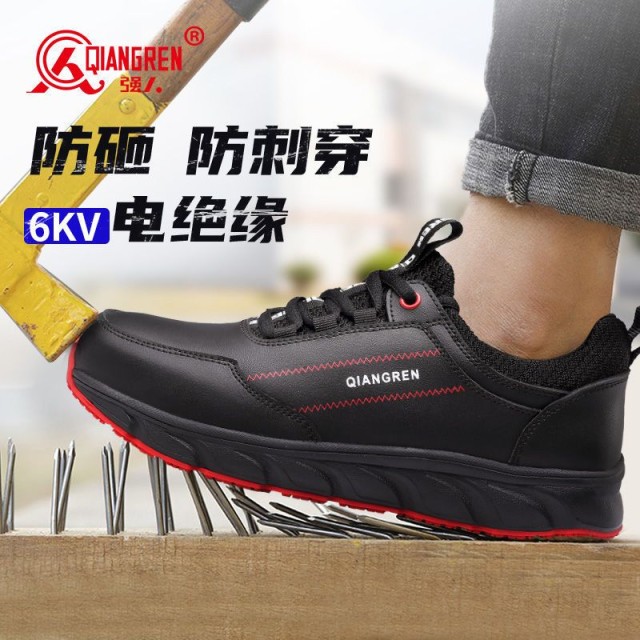For millions of industrial workers, steel toe boots are non-negotiable safety gear—but the trade-off between protection and comfort doesn’t have to be inevitable. This guide reveals practical strategies to mitigate foot fatigue while maintaining full compliance with workplace safety standards.
Steel Toe Boots and Foot Health: Debunking Myths
How Proper Sizing Impacts Long-Term Comfort
A staggering number of foot injuries stem from ill-fitting safety boots. Research shows that workers often tolerate tight toe boxes or loose heels to "break in" stiff boots, leading to blisters, calluses, and even long-term musculoskeletal strain.
Key fixes:
- Measure dynamically: Feet swell during shifts. Fit boots in the afternoon and wear the socks you’ll use at work.
- Prioritize toe space: Leave about a thumb’s width between your longest toe and the steel cap.
- Check heel lock: Your heel shouldn’t slide more than 1/8 inch when walking.
Myth: "Steel toes must feel tight to be protective." Truth: A properly sized boot distributes impact forces across the footbed, reducing pressure points.
Ergonomic Features That Reduce Workplace Fatigue
Modern safety boots integrate biomechanical designs to counteract fatigue:
- Rockered soles: Promote natural gait cycles, reducing calf strain during long shifts.
- Cushioned collars: Prevent Achilles tendon irritation from rigid backstays.
- Moisture-wicking linings: Minimize sweat buildup, a major contributor to blisters.
"Have you noticed how warehouse workers pivot constantly?" Boots with torsion control (lateral flexibility) reduce joint stress during repetitive motions.
Balancing Protection and Wearability
Alternatives to Traditional Steel Toes: Composite vs. Alloy
While steel offers unmatched crush resistance (often rated for impacts over 75 lbs), newer materials provide comparable safety with ergonomic benefits:
| Material | Weight | Best For | Limitations |
|---|---|---|---|
| Steel | Heavy (~2 lbs/boot) | Construction, heavy manufacturing | Conducts temperature; may trigger metal detectors |
| Composite | Light (~1.2 lbs/boot) | Airports, electrical work | Lower crush resistance than steel |
| Alloy | Moderate (~1.5 lbs/boot) | Oil rigs, foundries | More expensive |
Pro tip: Composite toes excel in cold environments—they don’t conduct heat away from toes like metal caps.
Best Practices for Extended Shifts and High-Risk Environments
- Rotate pairs: Alternating boots lets cushioning rebound and reduces moisture buildup.
- Use metatarsal guards: For jobs with falling debris (e.g., logging), add-on guards distribute weight more evenly than built-in protection.
- Custom orthotics: Over-the-counter arch supports can counteract the flat footbeds common in safety boots.
"Ever felt your toes go numb after hours on concrete?" Anti-fatigue insoles with shock absorption cut vibration transmission by up to 40%.
Putting It All Together
Foot comfort in steel toe boots isn’t about compromising safety—it’s about smart selections and habits. From choosing lighter composite materials to ensuring dynamic fit adjustments, small changes yield all-day relief.
Ready to upgrade your team’s footwear? 3515 partners with distributors and industrial buyers to deliver safety boots engineered for both protection and comfort. Our range includes CSA-, ESR-, and M-rated options with ergonomic designs proven in mining, construction, and logistics. [Contact 3515] to discuss bulk solutions tailored to your workforce’s needs.
Because the safest boots are the ones workers actually want to wear.
Products You Might Be Looking For:
Explore high-performance steel toe safety boots
Related Products
- Wholesale Customizable Suede Safety Boots - Puncture-Proof with Velcro Closure
- Puncture-Resistant Velcro Safety Boots for Wholesale & Custom Manufacturing
- Customizable Anti-Smash Safety Boots for Wholesale & Private Label Manufacturing
- Wholesale Durable Breathable Safety Boots Custom OEM Manufacturer
- Wholesale Durable Safety Boots | Custom Steel Toe & Puncture-Resistant Manufacturing
Related Articles
- How to Choose Work Boots That Balance Safety, Comfort, and Durability for Your Job
- How to Choose Work Boots That Match Your Job Demands and Safety Needs
- How Safety Work Boots Engineer Protection: Features and Standards for Targeted Hazard Mitigation
- Steel Toe Work Boots: Balancing Safety and Comfort for Demanding Jobs
- How to Choose Work Boots That Match Your Job's Safety Demands



















